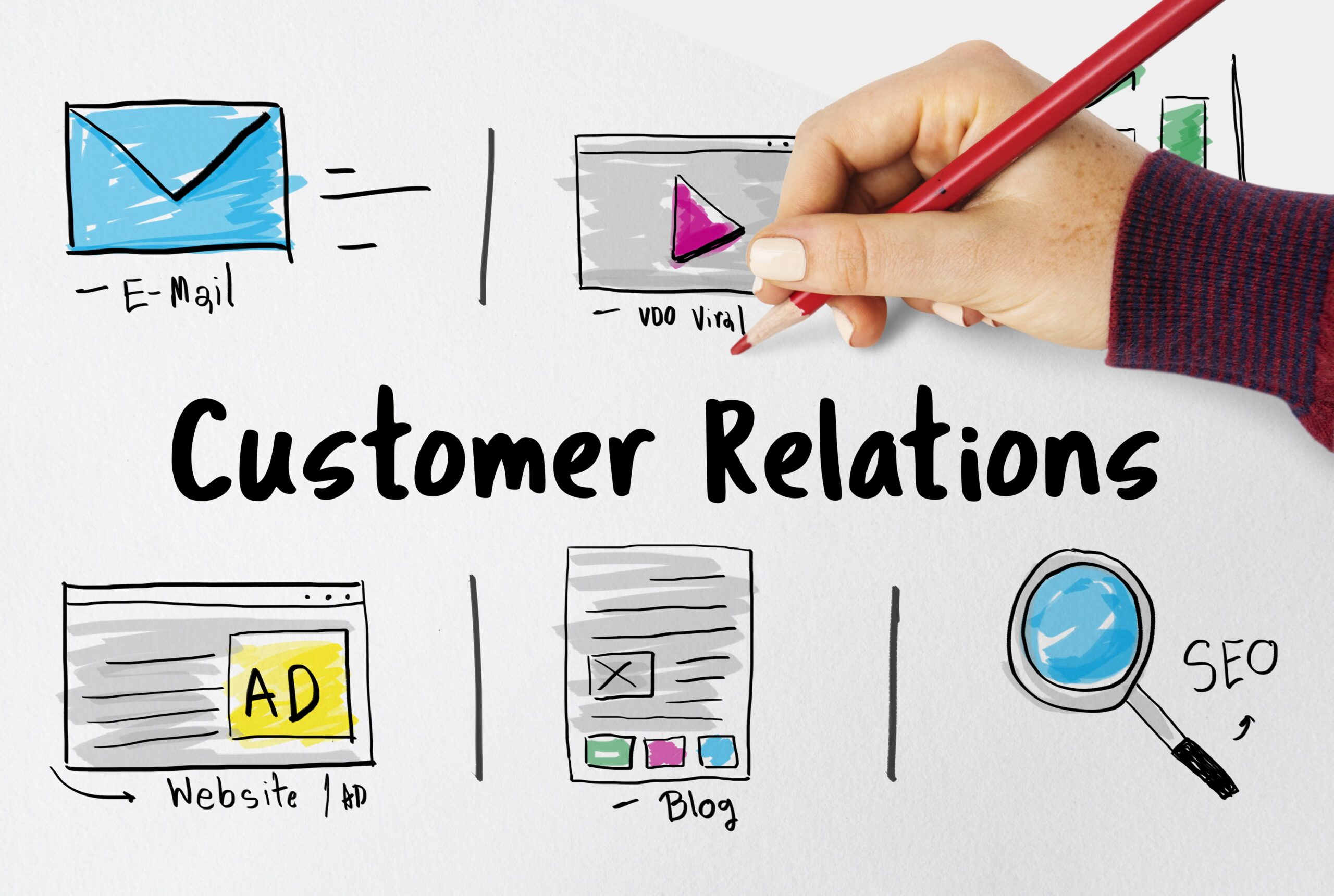The Secrets of Email Deliverability: A Guide to Higher Rates
Email deliverability is an important factor for successful email marketing campaigns. To ensure success, it is essential to be aware of the strategies and techniques needed to achieve good delivery rates. This guide will explain what email deliverability is and provide tips on testing and improving it through best practices like DMARC, SPF, DKIM as well as troubleshooting common issues with low delivery rates. With this information in hand you’ll be able to get more emails delivered successfully and achieve better results from your efforts.
Table of Contents:
- What is Email Deliverability?
- How to Test Your Email Deliverability?
- Best Practices for Improving Your Email Deliverability Rates
- DMARC and Its Impact on Email Deliverability
- SPF and Its Role in Ensuring Good Delivery Rates
- 7 . Troubleshooting Common Issues with Low Delivery Rates
- FAQs in Relation to Email Deliverability
- Conclusion

What is Email Deliverability?
Email deliverability is the ability of an email to reach its intended recipient. It’s a measure of how successful an email campaign has been, and it can be affected by several factors. Comprehending the components that contribute to email deliverability and how they operate can assist in optimizing your campaigns and enhancing their probability of success.
Email deliverability denotes the probability that an email dispatched from a sender will reach its intended recipient’s inbox without being classified as junk mail or impeded. A good delivery rate means more people will receive your emails, increasing their visibility and engagement rates.
Factors that Affect Email Deliverability:
There are many different elements that influence email deliverability, such as sender reputation, content quality, list hygiene, authentication protocols like SPF/DKIM/DMARC records set up on domain name servers (DNS), IP address reputation, frequency of mailings etc. All these components must be taken into consideration when assessing your overall delivery rate.
When you have good email deliverability rates, you can expect higher open rates which leads to increased engagement with customers resulting in better conversion rates for sales and other marketing objectives such as lead generation or brand awareness campaigns. Additionally, having strong delivery rates also helps build trust between businesses and their customers since they know they can rely on receiving messages from them in a timely manner without any issues related to filtering or blocking by ISPs (Internet Service Providers).
Testing your email deliverability can help maximize the success of your campaigns by ensuring that more messages reach their intended recipients. By exploring the tools available for testing email deliverability as well as steps and tips for improving results, you will be able to ensure that more of your messages reach their intended recipients.
How to Test Your Email Deliverability?
Testing your email deliverability is essential to ensure that your emails reach the intended recipients. There are several tools and steps you can take to test and improve your email deliverability rates.
To ensure successful email deliverability, selecting the right tool is essential; there are a variety of options available, such as Mail-Tester, Return Path’s Sender Score, Litmus Checklist, GlockApps, 250ok’s Inbox Monitor and SendForensics. Some of the most popular tools include Mail-Tester, Return Path’s Sender Score, Litmus Checklist, GlockApps, 250ok’s Inbox Monitor, SendForensics, and more. Each of these tools offers different features such as spam score checks or sender reputation monitoring so make sure to find one that best fits your needs.
Steps for Testing Your Email Deliverability:
Once you have chosen a tool to use for testing, it’s time to start running tests on each campaign before sending them out. This will allow you to identify any issues with content or delivery that could be causing problems down the line. You should also keep an eye on open rates and click-through rates over time in order to spot any trends that might indicate a problem with delivery or engagement levels from certain subscribers.
Finally, there are some tips you can follow when creating campaigns in order to increase their chances of being delivered successfully every time they’re sent out. For example; using segmentation techniques like A/B testing subject lines or personalizing messages based on customer data can help boost engagement levels while ensuring better inbox placement rate at the same time. Additionally avoiding words such as “free” which may trigger spam filters is always a good idea too.
Testing your emails’ delivery is a must for any prosperous email marketing strategy. With the proper instruments and procedures, you can guarantee that your messages are getting to their proposed beneficiaries quickly. Moving on to best practices for improving your deliverability rates, let’s look at how segmenting your audience and optimizing content can help improve results.

Best Practices for Improving Your Email Deliverability Rates
Segmenting Your Audience:
Segmenting your audience is a key factor in improving email deliverability rates. By dividing your subscribers into smaller, more focused groups, you can craft messages that are tailored to the needs of each group. This helps ensure that the right people get the right message at the right time and increases engagement with your emails. For example, if you have an ecommerce store selling clothing for men and women, it would be beneficial to segment out customers by gender so that they receive offers specifically tailored to their interests.
Optimizing Your Subject Lines and Content:
The content of your emails should also be optimized for maximum delivery success. Having a clear subject line will help increase open rates as well as make sure that recipients recognize who sent them the email quickly enough to avoid marking it as spam or deleting it altogether without reading it first. Additionally, using relevant keywords in both the subject line and body of your email will help boost its visibility in search engine results pages (SERPs). Make sure not to overstuff too many keywords though – this could result in being flagged as spammy or just plain annoying for readers.
Lastly, selecting a reputable Email Service Provider (ESP) such as MailChimp or Constant Contact is essential when sending out mass emails. These services offer features like whitelisting which increases deliverability rates by ensuring mail servers trust the source of an email before delivering it directly into inboxes rather than having them filtered into junk folders automatically. Additionally, most ESPs provide analytics that allow you to track how successful individual campaigns were so you can adjust accordingly in the future based on what works best with different audiences/segments.
By utilizing recommended approaches for optimizing email delivery rates, you can guarantee that your emails get to the desired addressees and maximize the success of your campaigns. Now let’s take a look at how DMARC affects email deliverability.

DMARC and Its Impact on Email Deliverability
DMARC, or Domain-based Message Authentication, Reporting and Conformance is an email authentication protocol that helps protect senders from email spoofing. It works by allowing the sender to specify a policy for their domain which determines how emails should be authenticated and what action should be taken if they fail authentication. DMARC also provides reporting tools to help monitor the effectiveness of its implementation.
What is DMARC? DMARC is a standard developed by major email providers such as Google, Yahoo., Microsoft and AOL in order to combat phishing attempts and other malicious activities conducted through fraudulent emails sent using fake addresses. It uses SPF (Sender Policy Framework) and DKIM (DomainKeys Identified Mail) protocols to authenticate messages sent from legitimate domains. This allows recipients’ mail servers to verify that incoming messages are coming from authorized sources before accepting them into their inboxes.
How Does DMARC Affect Email Deliverability? When implemented correctly, DMARC can drastically improve your deliverability rates by ensuring that only authenticated emails reach your intended recipients’ inboxes. In addition, it can reduce spam complaints since any unauthorized messages will not be accepted at all due to failed authentication checks. Finally, it can also provide valuable insight into who is sending emails on behalf of your organization so you can take appropriate action against any suspicious activity detected in the reports generated by this protocol’s implementation process.
DMARC is a powerful tool for improving email deliverability, and setting it up correctly can make all the difference. SPF configuration is a key factor for attaining high deliverability, so let’s explore the correct way to do it.
SPF and Its Role in Ensuring Good Delivery Rates
SPF (Sender Policy Framework) is an important tool for email marketers and small business owners to ensure good delivery rates. It helps protect against spammers by verifying the sender’s identity and preventing spoofing. SPF works by comparing the domain name in the “From” field of an incoming message with a list of authorized senders stored in DNS records. If the domain name in the “From” field matches an authorized sender on record, then it will be accepted; if not, it can be identified as dubious or even blocked.
What is SPF? SPF is an open standard that verifies the authenticity of email messages by comparing their sending IP address to a list of authorized senders stored in DNS records associated with the domain. It does this by checking the sending IP address against a list of authorized senders stored in DNS records associated with a particular domain name. This ensures that only those who have permission can send emails from that domain name.
How Does SPF Help with Delivery Rates? By using SPF, you can reduce the chances of your emails being blocked or marked as spam due to unauthorized spoofing attempts made on your domain name. As such, it plays an important role in ensuring good deliverability rates since more legitimate messages will make their way into inboxes instead of being filtered out as junk mail or bounced back entirely due to suspicion about their originator’s identity verification failure .
SPF is an important tool for ensuring good delivery rates, as it helps to authenticate the sender and protect against malicious emails. Moving on, we will explore how troubleshooting common issues with low delivery rates can help optimize email campaigns.

7 . Troubleshooting Common Issues with Low Delivery Rates
Low delivery rates can be a major problem for marketers and small business owners. It is critical to recognize the origins of reduced delivery rates in order to address them proficiently. Identifying the root cause is key, as different issues require different solutions.
Identifying what is causing delivery rates to be low can involve various elements. One common issue is poor email list hygiene – if your list contains invalid or outdated addresses, this can result in lower deliverability rates. Another factor is spam complaints from recipients – if too many people mark your emails as spam, this will negatively affect your reputation with ISPs (Internet Service Providers). Additionally, sending too frequently or sending irrelevant content can also lead to lower deliverability rates.
Once you’ve pinpointed the source(s) of your poor delivery rate woes, it’s time to devise strategies for remedying them promptly and efficiently. To start, scrub any invalid addresses from your mailing lists; enlist a dependable ESP with integrated tools that can authenticate contact information and purge bad data points automatically over time. If recipients are sending numerous spam complaints, analyze what type of content you’re broadcasting and make appropriate adjustments; contemplate dividing subscribers into smaller segments based on their interests so each recipient receives more pertinent messages tailored specifically to them rather than blanket newsletters disseminated indiscriminately.

FAQs in Relation to Email Deliverability
What has the biggest impact on email deliverability?
The most important factor for email deliverability is a good sender reputation. To achieve successful email delivery, it is essential to have an IP address and domain with a trustworthy background of delivering authentic messages that are not flagged as spam. Additionally, having valid authentication records such as SPF and DKIM set up will help ensure that your emails are accepted by the recipient’s server. Lastly, make sure to adhere to best practices when it comes to list hygiene and avoiding spam triggers like too many images or using all caps in subject lines. Following these steps will go a long way towards maintaining high levels of email deliverability.
What causes email deliverability issues?
Email deliverability issues are caused by a variety of factors, including incorrect or outdated contact information, spam filters blocking emails, email content that is flagged as inappropriate or malicious, and server-level blocks. Additionally, sending too many emails in a short period of time can cause deliverability issues due to the high volume overwhelming mail servers. Poorly formatted HTML code can also result in emails not being delivered properly. Finally, authentication protocols such as SPF (Sender Policy Framework) and DKIM (DomainKeys Identified Mail) must be configured correctly for successful delivery.
Why is email deliverability important?
Email deliverability is important because it ensures that your emails reach their intended recipients. If an email is not delivered, its intended recipient will be unable to view or take action on the contents. Poor delivery rates can lead to lost opportunities and decreased customer engagement with your brand. Additionally, low deliverability can negatively affect sender reputation, which in turn impacts future campaigns’ performance as well as inbox placement for all of your emails. To maximize the success of your email campaigns, ensuring high deliverability is key.
What hurts email deliverability?
Email deliverability can be hurt by a variety of factors, such as poor email list hygiene, outdated contact information, spammy content or subject lines, and sending emails to unengaged contacts. Additionally, using too many images in an email or having the wrong domain reputation can also reduce deliverability rates. To ensure successful delivery of your emails it is important to regularly maintain your mailing lists and keep up with industry best practices for creating effective campaigns.
Conclusion
Grasping the fundamentals of email deliverability, as well as utilizing tactics such as DMARC, SPF and DKIM to enhance delivery success is a must for successful email marketing. If you have any issues with low delivery rates, troubleshooting these common problems should be a priority so that you can ensure successful campaigns going forward.
Take control of your email deliverability with DirectIQ. Our advanced solutions will help you get the most out of your email marketing efforts.












